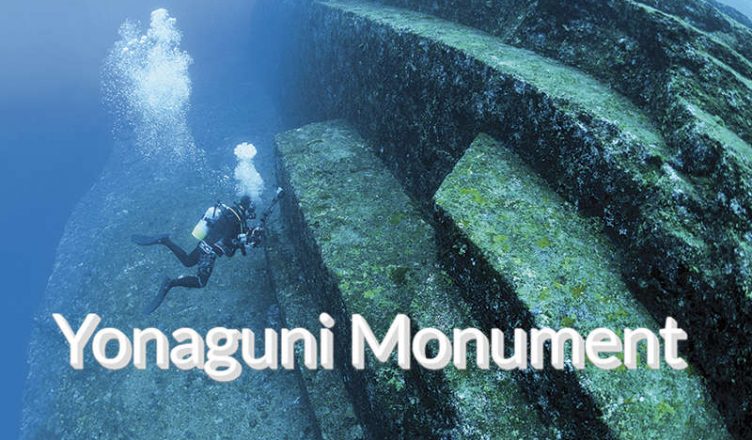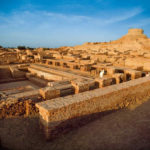One of the largest discoveries in archaeological history was completed in the summer of 1995 in the waters near Japan. A well-preserved ancient city, or at least several closely related sites, extends for an astonishing 311 miles underwater, and it is known as the Yonaguni Monument.
Since March 1995, divers have discovered eight scattered sites in the waters from Okinawa to Yonaguni Island. The first site was an intriguing square structure, not very clear and covered by coral to the extent that its man-made parts could not be confirmed. Subsequently, a diver in the summer of 1996 unexpectedly discovered a large, angular platform beneath the waters south of Okinawa at a depth of 40 feet, unquestionably of artificial origin. Further searches by different diving teams revealed another monument and more man-made structures. They observed long and wide streets, grandiose stairs and arches, and perfectly cut massive stones—all harmoniously unified in an unprecedented linear architectural style.
In the following months, Japan’s archaeological community became involved in this exciting excavation. Trained professionals joined forces with amateur enthusiasts who were the first to discover the site, forming an alliance based on mutual respect and showcasing exemplary collaborative spirit. Their collective efforts quickly yielded fruitful results. In September, not far from Yonaguni Island and 300 miles south of Okinawa at a depth of 100 feet underwater, they discovered a massive pyramid-shaped structure. This colossal structure, measuring 240 feet in length, sat in a broad area that appeared to be used for ceremonies, flanked by enormous tower gates.
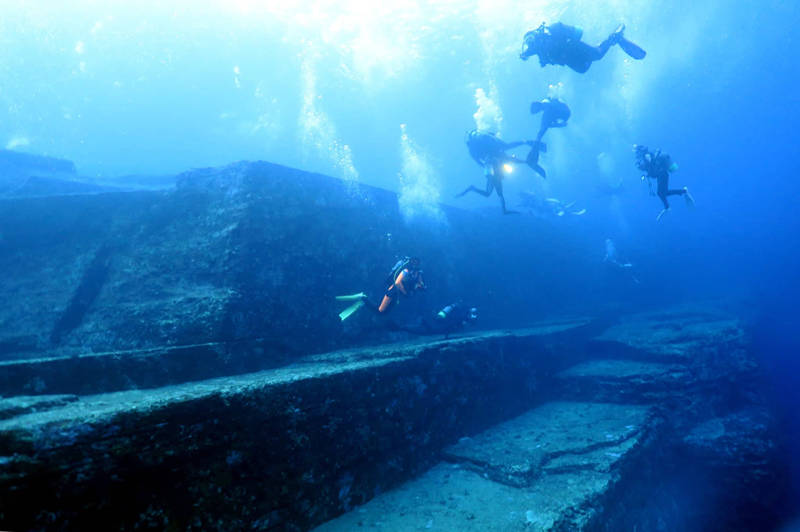
Due to generally low visibility at a depth of 100 feet underwater, the clarity of this site was sufficient for photographic and video documentation. These images dominated the headlines of Japanese newspapers for over a year. However, the American public remained unaware of this discovery until last spring when “Ancient American” magazine reported on it. Subsequently, only CNN aired reports on this underwater city in Japan. Other American archaeological journals, and even various newspapers, remained silent on the matter. One might wonder why such a astonishing discovery, seemingly enough to excite archaeologists, has been overlooked for so long. Why has the silence been more effective in concealing the groundbreaking findings of the Okinawan site than the fact that it is located underwater?
Report from “Ancient American”: Divers Uncover World’s Oldest Structures
Divers have discovered what is believed to be the world’s oldest structures, with an age approximately twice that of the Egyptian Great Pyramid. This pyramid-like structure, constructed from rectangular colossal stones, is located on the seabed near Japan, and archaeologists speculate that it might be preliminary evidence of an unknown Stone Age civilization.
The structure is 600 feet wide, 90 feet tall, and dates back to at least 8000 BCE. Comparatively, the oldest pyramid in Egypt, the stepped pyramid in Saqqara, was constructed 5000 years later. Situated 75 feet underwater near Yonaguni Island, a small island southwest of Okinawa, this structure was discovered by a group of divers a decade ago. Locals initially believed it to be a natural formation.
Professor Masaki Kimura, a geologist at the University of the Ryukyus in Okinawa, was the first to study and deduce that the five-tiered structure was man-made. He stated, “This structure is not a natural occurrence. If it were, there would be accumulated debris from erosion, but no such stone fragments were found.”
He added, “There are things around this structure that resemble roads, further indicating its artificial origin.”
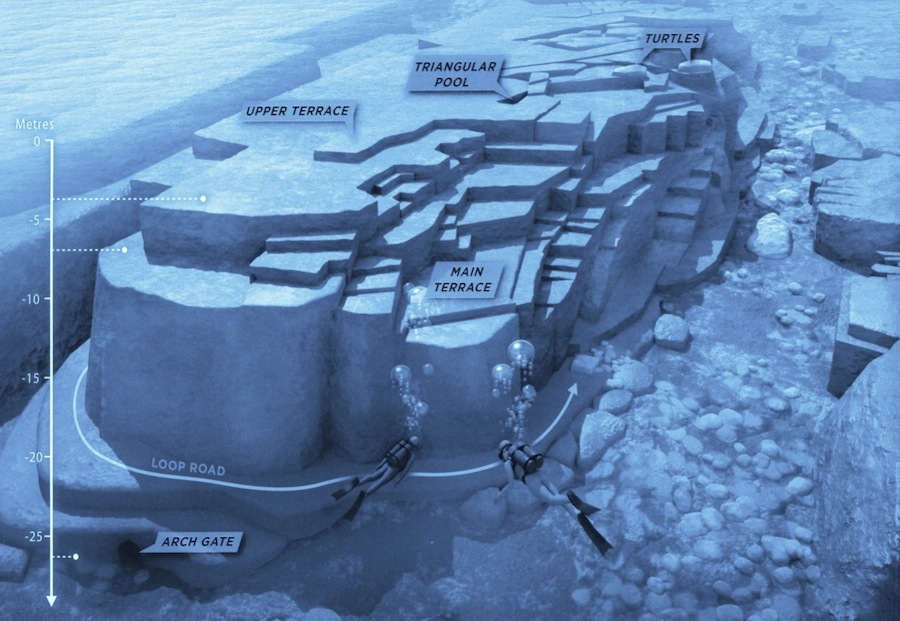
Geology professor Robert Schoch of Boston University dived to inspect the structure last month. He said, “It looks like a series of giant steps, each about a meter high. Its cross-section is essentially similar to a stepped pyramid. It’s an intriguing structure. Natural erosion combined with the process of stone fracture could potentially create this structure, but I haven’t found a process that could produce such sharp stepped sections.”
Further evidence supporting the artificial nature of the structure is the discovery of small stone piles nearby. Similar to the main structure, these miniature pyramids are constructed from stacked stone slabs in a stepped pattern, measuring 10 meters wide and 2 meters high.
Professor Kimura believes it is too early to determine who built this monument or its purpose. He said, “This structure could be a temple for an ancient religion, used to praise some ancient deity, similar to how residents of Okinawa believe the Nirai-Kanai god brings them happiness from the sea. Since no humans are recorded as capable of building such a monument 10,000 years ago, this may be evidence of an unknown human civilization.”
“Only humans with a high level of technological advancement could undertake such a project, likely originating from the Asian continent, where the oldest human civilizations were nurtured. Such a massive structure would require the use of some form of machinery.”
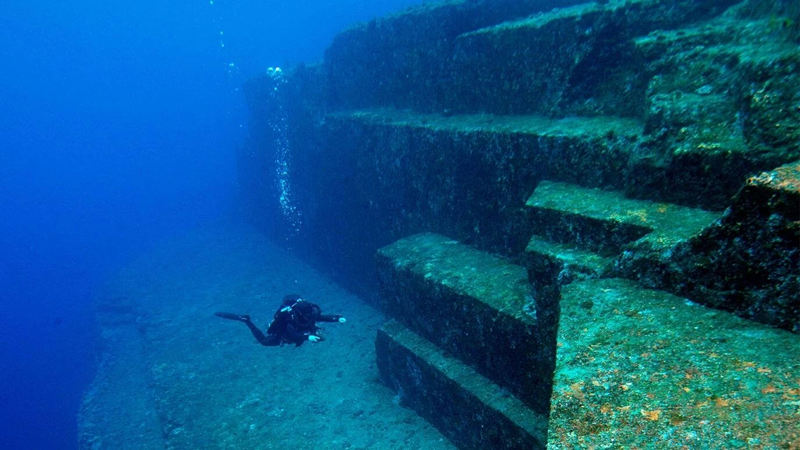
Professor Teruaki Ishii, a geologist at the University of Tokyo, said the structure dates back to at least 8000 BCE when the land it was on submerged after the last glacial period. He said, “I hope it is man-made; that would be exciting. But I think it’s too early to draw conclusions. It could be a natural formation, but part of it is likely man-made.”
Japan’s earliest known civilization dates back to the Neolithic era around 9000 BCE, where people lived by hunting and gathering. There is no archaeological record indicating the existence of an advanced human civilization capable of constructing such a large pyramid-like structure at that time. British archaeologists remain cautious about this discovery. A documentary about this finding will be broadcast on Channel Four this summer.
Jim Mower, an archaeologist at the University of London, said, “If it can be confirmed that this site is indeed man-made and has endured for 10,000 years, it will significantly alter our previous understanding of Southeast Asian history. It will place its builders on par with the ancient civilizations of Mesopotamia and the Indus Valley.”
Japan’s Submerged Ancient City and Mysterious Underwater Pyramid
In the following years, numerous baffling stone structures, including massive stones, pillars, large-tiered buildings, polished steps, canals, caves, and carvings, have been discovered in the Iseki Point area. Experts ultimately deduced that this vast collection of precious relics constitutes an advanced city that sank approximately ten thousand years ago. Since then, a once relatively unknown outer island of Japan, located just 111 kilometers from Taiwan, has captured global attention, becoming another dazzling focal point in the field of archaeology. Subsequently, scientists speculated the existence of a mysterious pyramid far from the Japanese coastline, displaying carvings at its base. However, the tools used in the construction of its foundation were not previously considered part of Japan’s ancient civilization, leaving the enigmatic underwater pyramid shrouded in mystery.
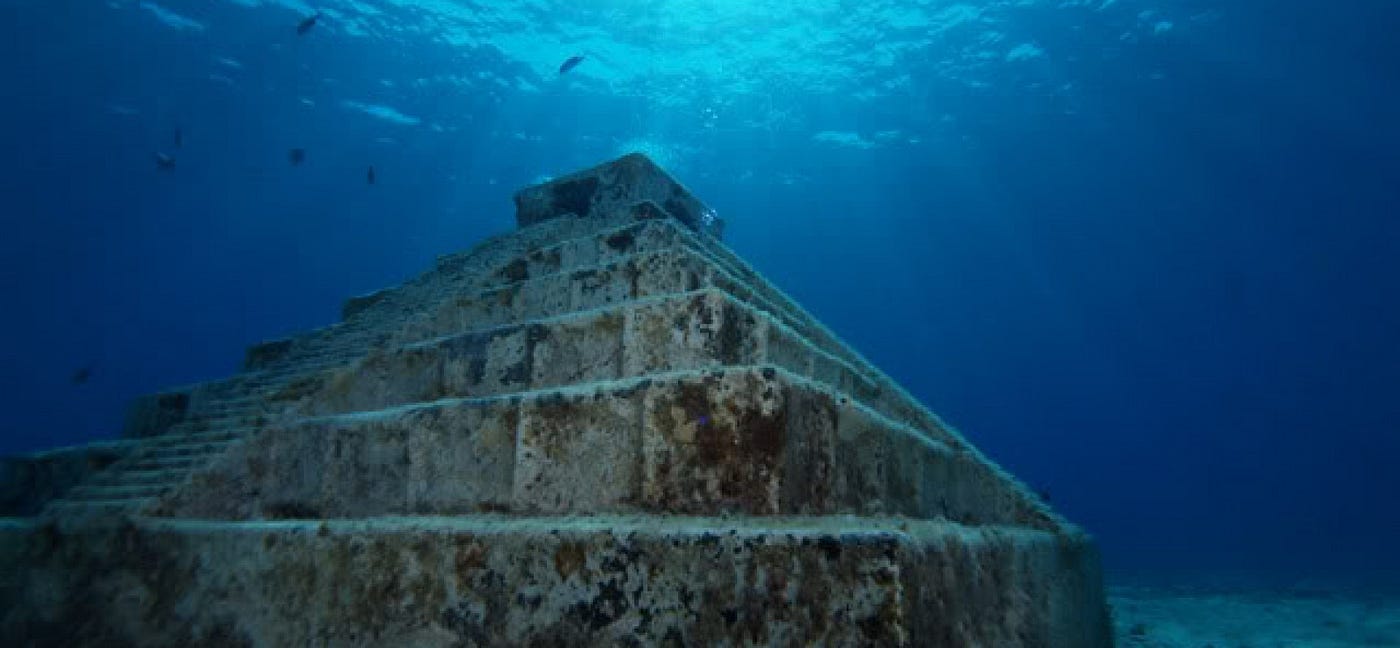
In the westernmost waters off Ishigaki, a massive pyramid constructed with stacked rocks was discovered, shocking both the Japanese archaeological community and historians. At the pinnacle of this enormous pyramid, structures resembling gates, corridors, and watchtowers were found. Additionally, above the gates, clear and discernible patterns, resembling drawings and hieroglyphs, were identified. As the ‘Ishigaki Pyramid’ was recently discovered, detailed academic studies have not yet been publicly disclosed. However, it is generally believed that the discovery of this underwater pyramid could be the key to unlocking the mysteries of the ‘Lost MU Continent and MU Civilization.’ Besides the various findings at the temple, there have been astonishing recent discoveries near the southeastern coast of Ishigaki Island at the ‘Ryukami Iwa.’ Ryukami Iwa has been a revered object of worship for island residents since ancient times. According to local legends, a young man once sat on Ryukami Iwa, and as the sea raged with waves, he began fervently praying with closed eyes. When he opened his eyes, he found himself safely on solid ground as the man and the stone were about to be engulfed by the sea. Ryukami Iwa thus became a symbol of protection for the island, and the nearby sea became a ‘sacred area’ where deities are believed to appear. Strikingly, the recent underwater survey by the University of the Ryukyus discovered human head sculptures several meters tall directly beneath Ryukami Iwa, along with clearly man-made carvings and even hieroglyphs. This new finding not only aligns with the hypothesis proposed by American scholar James Churchward about the ‘MU Continent’ but also verifies the ancient legend suggesting a ‘subsidence of the earth’s layers’ thousands of years ago.
Exploring the Lost MU Continent and the Mysterious Underwater Civilization of the Ryukyu Islands
The so-called ‘MU Civilization’ originates from the early 20th-century American scholar James Churchward’s proposal of the ‘Lost MU Continent.’ According to Churchward, the prehistoric Pacific region, including Japan, Okinawa, and Taiwan, was once a connected continent larger than South America, hosting an advanced ‘MU Civilization.’ Based on Churchward’s hypothesis, the ‘MU Civilization’ and the ‘Lost MU Continent’ succumbed to geological changes caused by earthquakes, sinking overnight into the depths of the ocean. As this civilization dates back approximately 12,000 years, there are no recorded documents aside from oral traditions. It is believed that the ‘MU Civilization’ silently rests on the Pacific seabed, awaiting discovery of its true nature. In fact, about half a century ago, fishermen discovered gigantic pyramids and ancient castles on the seabed southwest of Ishigaki Island. In 1986, local diving experts named it the ‘Ruins Diving Tourist Zone,’ attracting photographers and tourists to dive and observe the relics. This also captured the attention of local scholars in Okinawa, leading to academic underwater archaeological research.
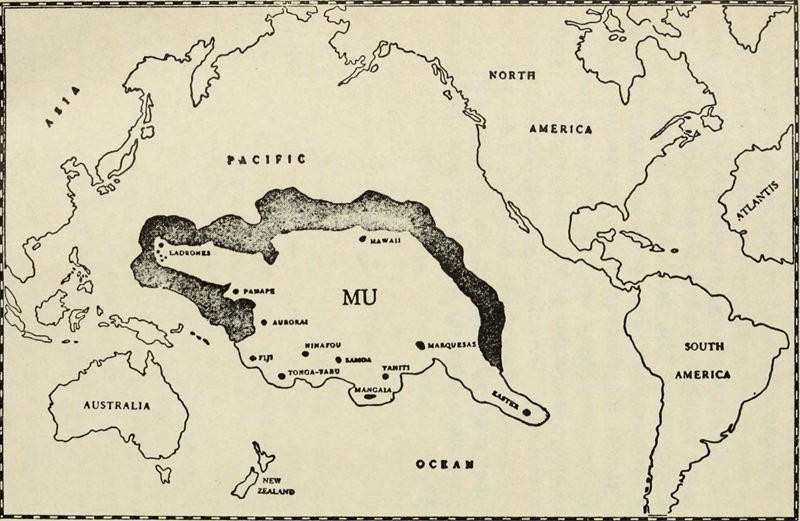
Approximately two years ago, the underwater ‘temple’ at Shinkawa Hana, southeast of Ishigaki, was reconstructed in 3D by an underwater archaeological team using computer synthesis. The orientation of worship items like sea turtles, spirit stones, and squares suggested that the site might have been a temple for ancient residents to gather and worship. Regarding the north-facing two semi-circular ‘pits’ near the temple, archaeologists suggest that these depressions might have been bathing spots for rituals or pools for maidens about to be offered to the gods. The positioning and arrangement of spirit stones near the semi-circular pits resemble folk beliefs in Okinawa and mainland Japan. Furthermore, features like the arched gateway and stacked stone gates to the east of the temple resemble architectural elements of the Ryukyu Kingdom, which emerged ten thousand years later. Two overlapping stones found near the gateway are speculated to be foundational stones, intricately processed by human hands, indicating a part of the castle structure.
New discovery: Enigmatic Stone Heads, Glyphs, and the Lost MU Civilization
Despite the passage of countless millennia, technologically advanced underwater photography has rendered the facial features of colossal stone heads remarkably clear. Moreover, in close proximity to these massive anthropomorphic sculptures, researchers have unearthed hieroglyphics. According to the investigative team’s analysis, these symbols bear a striking resemblance to ancient pictographs passed down in the folklore of Ishigaki Island. Unlocking the meaning of these hieroglyphics could potentially reveal the long-lost ‘MU Continent and MU Civilization.’
In fact, remnants resembling the ‘MU Civilization’ have been discovered not only around Ishigaki Island but also in the waters off Okinawa and mainland Japan. The colossal stone structures suggest a common origin for these civilizations. For instance, at the westernmost tip of Ishigaki in the seas of Nishizaki, a massive pyramid constructed from stacked rocks has recently been uncovered, leaving the Japanese archaeological and historical communities in awe.
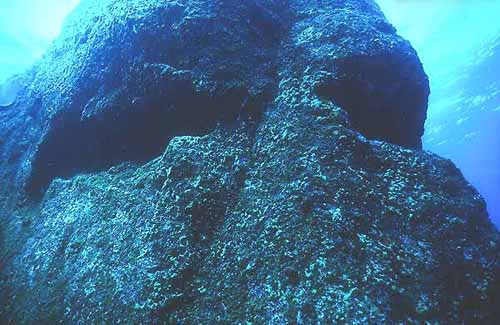
Reports also indicate that ancient artifacts and inscribed texts have been found near the Nishizaki Pyramid. The pyramid’s design bears resemblance to the ‘Matsuida Iwafune’ in the Nara Horyuji region, but also shares similarities with the pyramids of the ancient Mayan civilization in Mexico. If evidence were to emerge connecting the Nishizaki Pyramid with the Mayan civilization, it could potentially rewrite the entire narrative of the origin of civilizations in the Asia-Pacific region.
The specific structures, discovered over 20 years ago by a diving tour guide, include ten buildings near Ishigaki Island and five related structures near the main island of Okinawa. These structures consist of a castle, a triumphal arch, five temples, and at least one large stadium, interconnected by roads and waterways, with some relics suggesting the presence of massive walls. The total estimated area of this extensive underwater archaeological site is 300 meters by 150 meters.
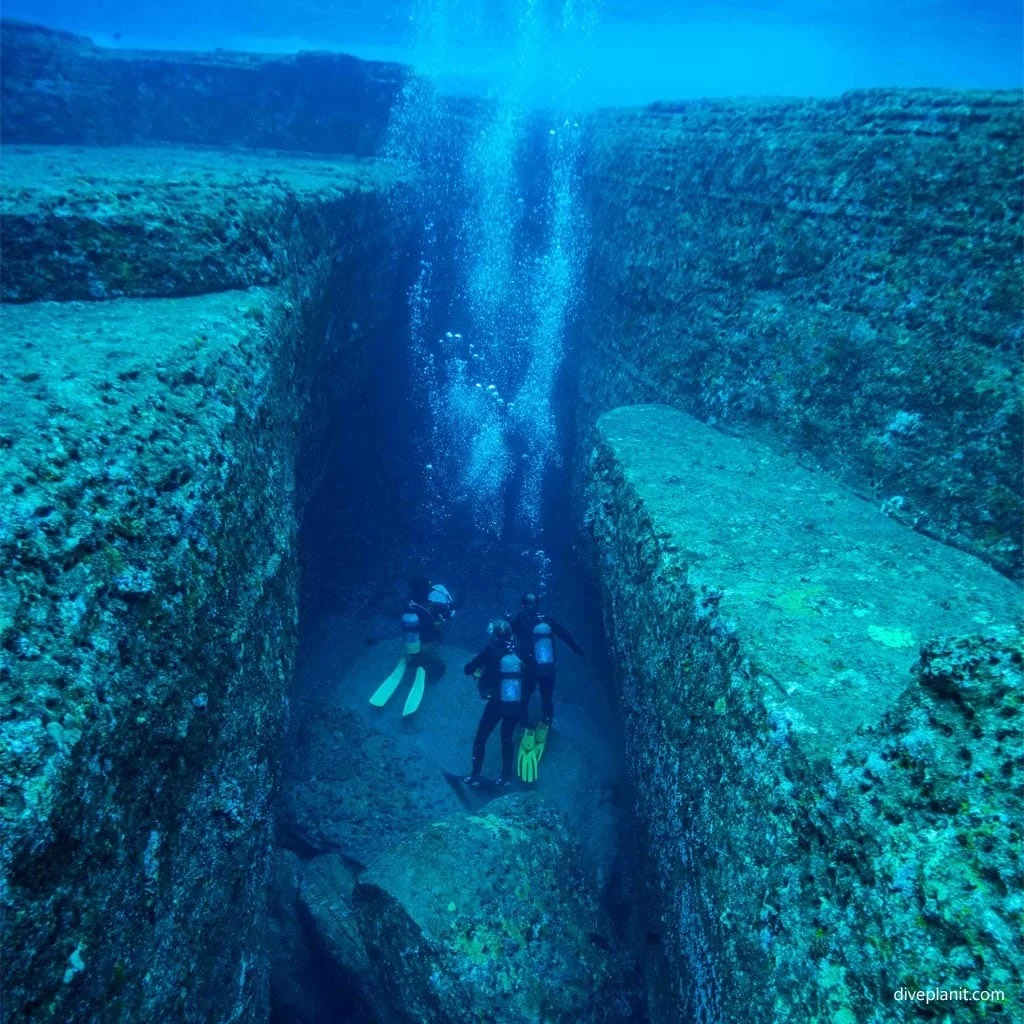
This vast underwater architectural complex exhibits distinct features, notably the concentration of large, precisely processed stone blocks forming a colossal stepped structure resembling a pyramid, with the largest stone measuring 250 meters in length and 25 meters in height. The inclined exterior walls, coupled with steeply angled steps, suggest it served as a place of worship. Among the stone carvings, a uniquely shaped stone, approximately seven meters tall, resembling a male face with numerous eyes carved onto it, stands prominently. A nearby sea floor also revealed a colossal stone featuring carvings of a turtle, reminiscent of the legendary turtle in Japanese folklore, particularly the story of ‘Urashima Taro.’ These discoveries not only expand the scope of human civilization research but also enrich the allegorical content of traditional folklore, providing new creative possibilities for filmmakers today.
Scientists have also identified stalactites, suggesting that the city sank into the sea along with these geological formations. The estimated history of the site dates back at least 5,000 years, inferred from the age of the stalactites. Similar structures have been found near the coast, with charcoal dating back 1,600 years. Scientists believe the submersion of the city was likely caused by a powerful earthquake, consistent with the frequent seismic activity in the Pacific Ring of Fire, where Ishigaki Island is located. The historical record notes a massive tsunami striking Ishigaki Island in April 1771, considered the largest in recorded history, with estimated wave heights exceeding 40 meters.
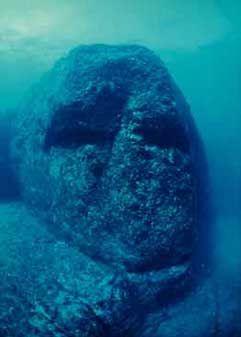
To date, scientists have not found more direct evidence linking this underwater relic to human activity. However, the discovery of a painted, cow-like relief has piqued their interest, and further research will delve into determining the composition of the pigments. Scientists express a desire for in-depth underwater exploration to uncover additional insights into the significance of this submerged archaeological site.
Possible reasons for the submersion of the Yonaguni Monument
1. Geological Changes: Scientists believe that the disappearance of the MU civilization and MU continent was caused by geological changes triggered by earthquakes. The region around Yonaguni Island is known for frequent seismic activity, with a historically significant tsunami in April 1771, estimated to have waves exceeding 40 meters. Such intense seismic events could have led to the submersion of the underwater structures off the coast of Yonaguni.
2. Volcanic Eruption: According to Colonel James Churchward’s theory, Mu continent was destroyed about 12,000 years ago by volcanic eruptions, tsunamis, and earthquakes. If Yonaguni Monument is indeed related to Mu continent, volcanic activity could be one of the reasons for the submersion of the civilization structures in the area.
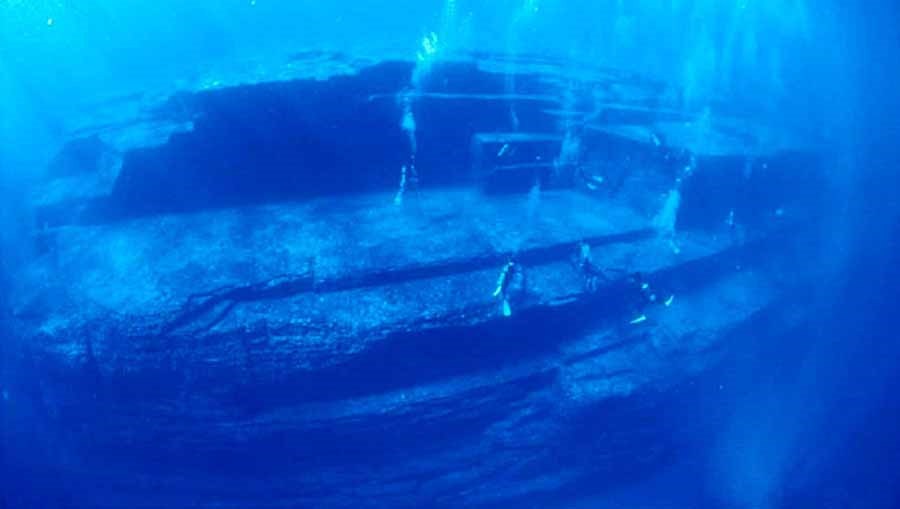
3. Tidal Waves: While the article does not explicitly mention tidal waves or other natural phenomena discovered during the 1995 exploration of the ancient city ruins near Yonaguni, such occurrences could accelerate the submersion and erosion of the archaeological sites.
4. Civilization Disappearance: Colonel James Churchward’s theory suggests that Mu continent was destroyed approximately 12,000 years ago, leading survivors to escape to other lands. If Yonaguni Monument is linked to Mu continent, such sudden catastrophic events could result in the disappearance and submersion of the civilization structures.
In summary, the submersion of Yonaguni Monument could be attributed to various factors, including earthquakes, volcanic activity, and other natural forces, making it a crucial aspect of underwater civilization research in the region.
END:
While Yonaguni Monument and the surrounding underwater civilizations have sparked extensive research and curiosity, the future of this underwater site remains filled with unknowns and opportunities. With advancements in technology, including high-tech underwater imaging and diving techniques, we can hope to gain a deeper understanding of this mysterious ancient civilization. Future research may involve more detailed geological and archaeological analyses of Yonaguni Monument to determine its age and construction methods. Scientists and archaeologists may further investigate the surrounding environment of the site to unravel the mysteries of the ancient civilization that disappeared in this region.
Simultaneously, international collaboration will be key to future studies. Scientists and archaeologists from different countries can work together, sharing resources and technology to facilitate a more comprehensive understanding of this region. Such collaboration will contribute to building a more holistic historical record and may potentially reinterpret ancient civilizations in the Asia-Pacific region. Despite various theories, controversies surrounding the authenticity of Yonaguni Monument, and its connection to ancient civilizations, make this underwater site a captivating subject of study. Future discoveries may provide us with more information, enriching our understanding of past civilizations, and offering new perspectives on interpreting Earth’s history. Regardless of the outcome, this mysterious underwater site will continue to inspire curiosity about ancient history, fostering further exploration of our shared past.
More UFOs and mysterious files, please check out our YouTube channel: MysFiles
Chelyabinsk meteor event: Did the UFO crush this huge meteor?
